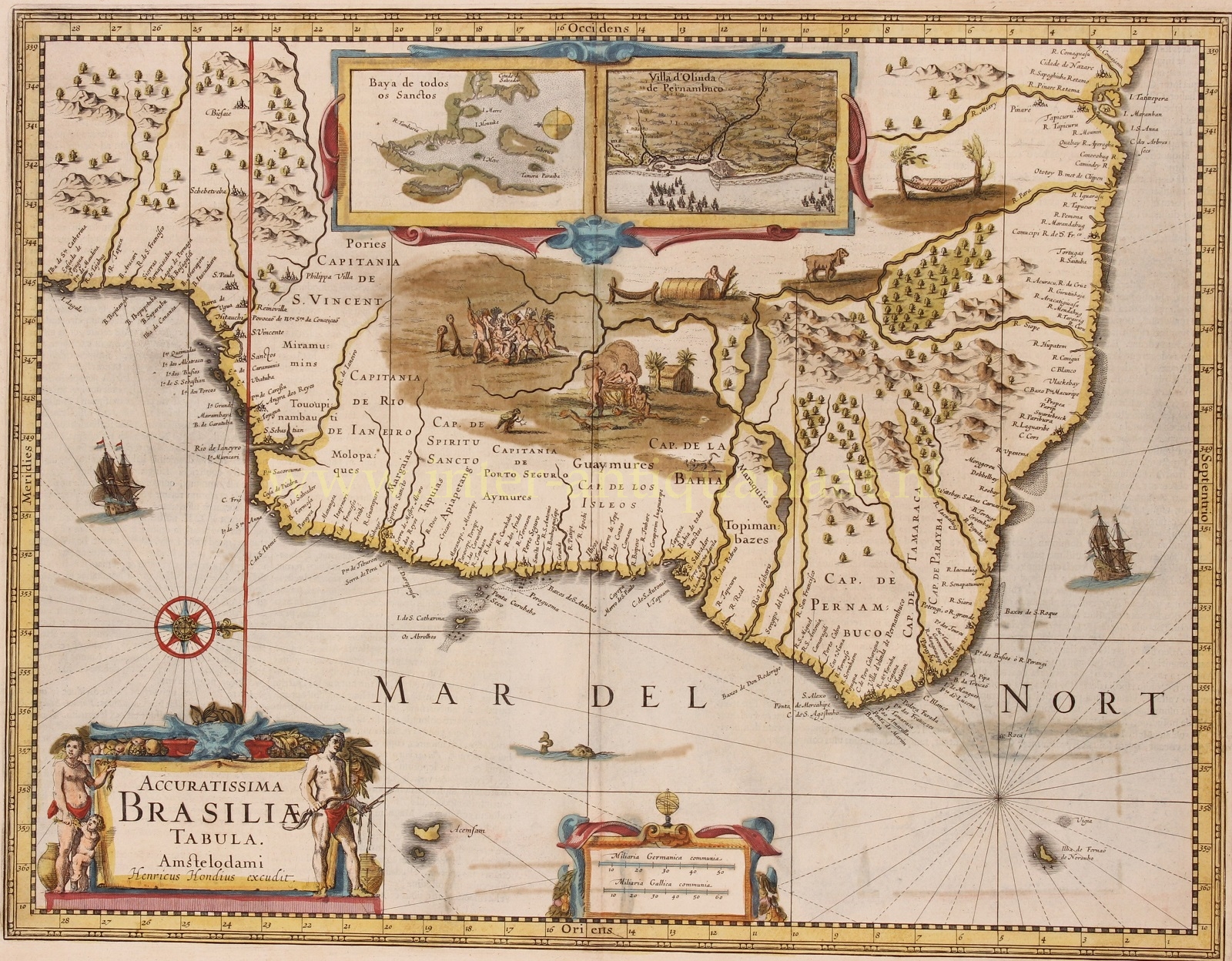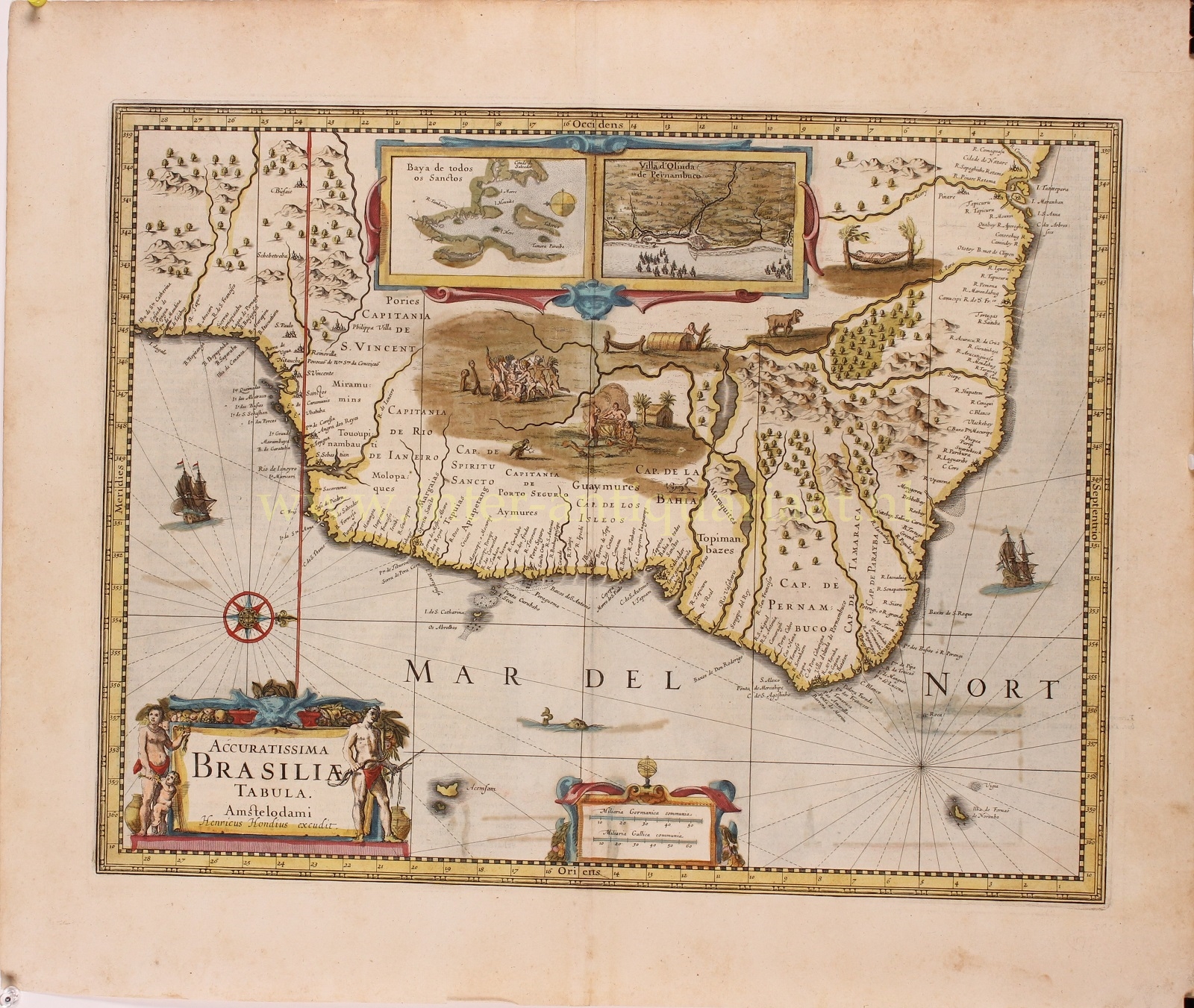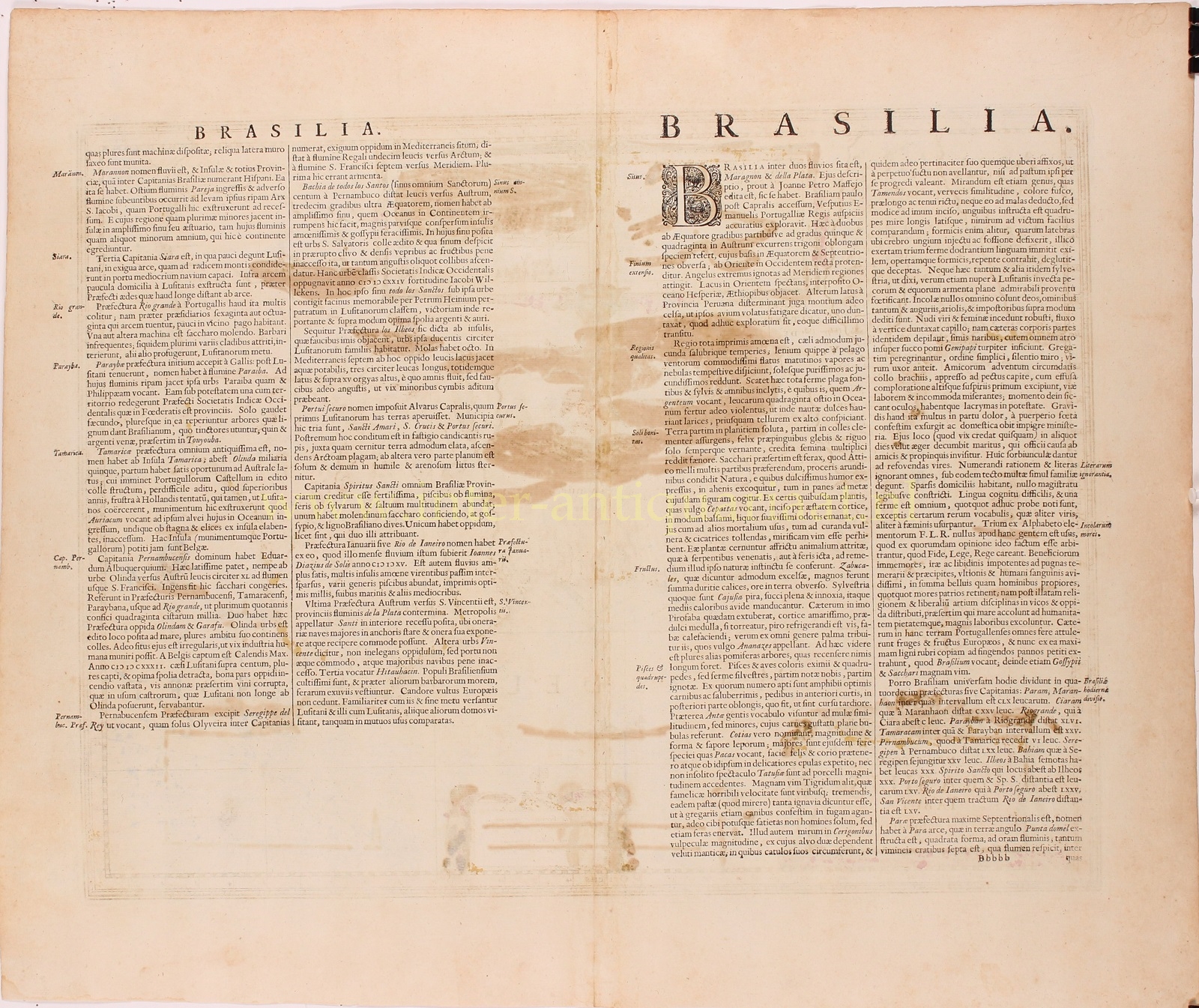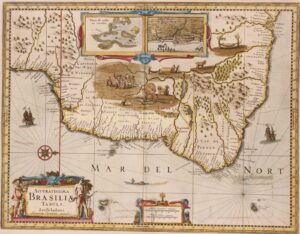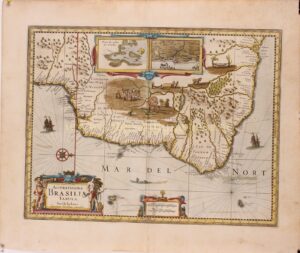THE DUTCH IN BRAZIL
“Accuratissima Brasiliae Tabula” copper engraving published by Henricus Hondius around 1635. With original hand colouring. Size. 39 x 50 cm.
In the summer of 1629, the Dutch coveted a newfound interest in obtaining the captaincy of Pernambuco, the largest and richest sugar-producing area in the world. The Dutch fleet of 65 ships was led by Hendrick Corneliszoon Loncq; the Dutch West India Company (WIC) gained control of Olinda by 16 February 1630, and Recife (the capital of Pernambuco) and António Vaz by March 3.
Matias de Albuquerque, the Portuguese governor of Pernambuco, led a strong Portuguese resistance which hindered the Dutch from developing their forts on the lands which they had captured. By 1631, the Dutch left Olinda and tried to gain control of the Fort of Cabedello on Paraíba, the Rio Grande, Rio Formoso, and Cabo de Santo Agostinho. These attempts were also unsuccessful, however.
Still in control of António Vaz and Recife, the Dutch later gained a foothold at Cabo de Santo Agostinho. By 1634 the Dutch controlled the coastline from the Rio Grande do Norte to Pernambuco’s Cabo de Santo Agostinho. They still maintained control of the seas as well. By 1635 many Portuguese settlers were choosing Dutch-occupied land over Portuguese-controlled land. The Dutch offered freedom of worship and security of property. In 1635 the Dutch conquered three strongholds of the Portuguese: the towns of Porto Calvo, Arraial do Bom Jesus, and Fort Nazaré on Cabo de Santo Agostinho. These strongholds gave the Dutch increased sugar lands which led to an increase in profit.
It was around 1635 that Henricus Hondius published this map. In the interior parts of the map we see indigenous people fighting each other and heads impaled on poles. Cannibals dissect a body and are roasting an arm. In another picture, someone is napping in a hammock.
The Dutch remained a minority during their almost 24 years of rule over Brazil’s northern coast. This created a precarious balance between the Dutch Protestant administrative elite and the Portuguese Catholic landlords.
Residents of Nieuw Holland could trade freely (although subject to import and export taxes) in all goods, except for African slaves, dye wood and ammunition, to which the WIC retained exclusive rights.
Price: Euro 850,-


